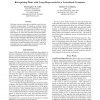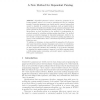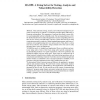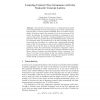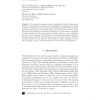135
Voted
SIGIR
2012
ACM
13 years 2 months ago
2012
ACM
Cross-language information retrieval (CLIR) today is dominated by techniques that use token-to-token mappings from bilingual dictionaries. Yet, state-of-the-art statistical transl...
167
click to vote
CPP
2011
14 years 8 days ago
2011
Parsing text to identify grammatical structure is a common task, especially in relation to programming languages and associated tools such as compilers. Parsers for context-free g...
107
Voted
AAAI
2011
14 years 14 days ago
2011
This paper extends existing plan recognition research to handle plans containing loops. We supply an encoding of plans with loops for recognition, based on techniques used to pars...
119
Voted
ESOP
2011
Springer
14 years 4 months ago
2011
Springer
Abstract. Dependent grammars extend context-free grammars by allowing semantic values to be bound to variables and used to constrain parsing. Dependent grammars can cleanly specify...
115
click to vote
CAV
2011
Springer
14 years 4 months ago
2011
Springer
Abstract. Many automatic testing, analysis, and verification techniques for programs can effectively be reduced to a constraint-generation phase followed by a constraint-solving ...
120
click to vote
ACL
2011
14 years 4 months ago
2011
We discuss some of the practical issues that arise from decoding with general synchronous context-free grammars. We examine problems caused by unary rules and we also examine how ...
121
click to vote
TCBB
2011
14 years 7 months ago
2011
Stochastic models such as hidden Markov models or stochastic context free grammars can fail to return the correct, maximum likelihood solution in the case of semantic ambiguity. T...
117
Voted
ICGI
2010
Springer
14 years 9 months ago
2010
Springer
The Syntactic Concept Lattice is a residuated lattice based on the distributional structure of a language; the natural representation based on this is a context sensitive formalism...
112
Voted
BMCBI
2005
15 years 11 days ago
2005
Background: Ambiguity is a problem in biosequence analysis that arises in various analysis tasks solved via dynamic programming, and in particular, in the modeling of families of ...
136
click to vote
JOLLI
2006
15 years 13 days ago
2006
We examine the expressive power of probabilistic context free grammars (PCFGs), with a special focus on the use of probabilities as a mechanism for reducing ambiguity by filtering ...

